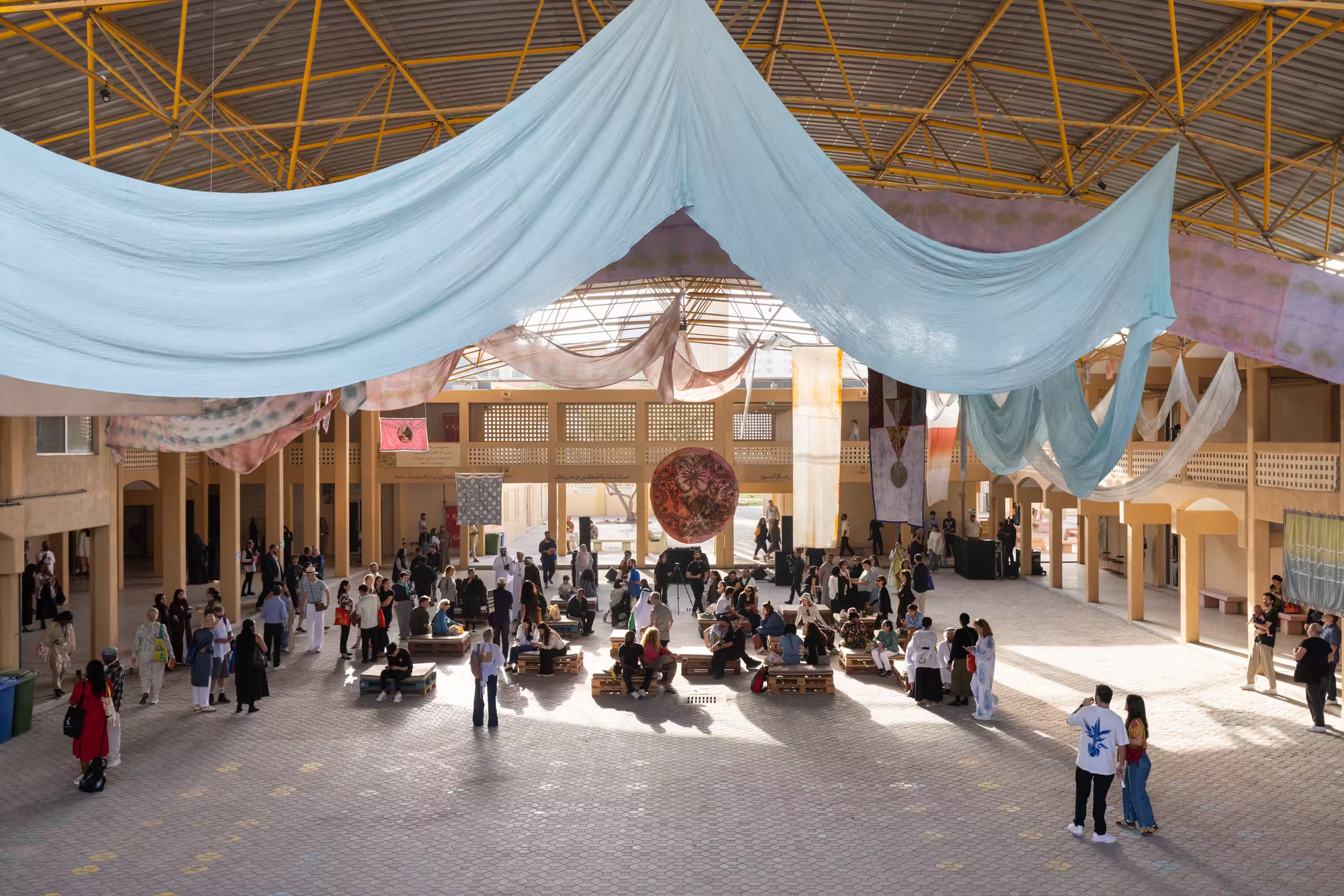
Installation view, Hashel Al Lamki, Maat, 2025. Photography by Ivan Erofeev. Image courtesy of the artist, Sharjah Biennial 16, and Tabari Artspace, Dubai.
The Sharjah Biennial is a massive four-month-long show that takes place every two years across the United Arab Emirates city. This year marks its 16th edition, with the theme “to carry”—concerned primarily with indigeneity, feminism, de-colonialism, migration, and resource theft and scarcity. The overall fair presented by the Sharjah Art Foundation (SAF) spans across its host city and surrounding towns. Considering its large scale, it is extremely impressive how much the five curators—all women hailing from the Global South—are able to fuse together.
Video art is certainly the strongest medium featured. The Canadian artist Stephanie Comilang’s Search for Life II (2025), involves TikTok content made by pearl divers in the Arabian Gulf, the Philippines, and China, paired with listful music. Portuguese photographer Mónica de Miranda’s film showcases decolonial contemplations in Angola, As If The World Had No West (2024), a sprawl of beautiful landscape and poetry displayed over three massive screens. Performance duo Himali Singh Soin and David Soin Tappeser, known as Hylozoic/Desires, film of fictional salt divination rituals contend with the colonial-era British salt tax. Sharjah-based artist Ayman Zedani discusses the history of humanity through the return of the old ones (2020), which personifies petroleum’s origin in a jarring confrontation between the Gulf and the world’s relationship with oil. And, I Am Hymns of the New Temples (2023), by Egyptian artist Wael Shawky, screened in a barn-as-auditorium, depicts gods and goddesses in Pompei discussing war and its never-ending nature.
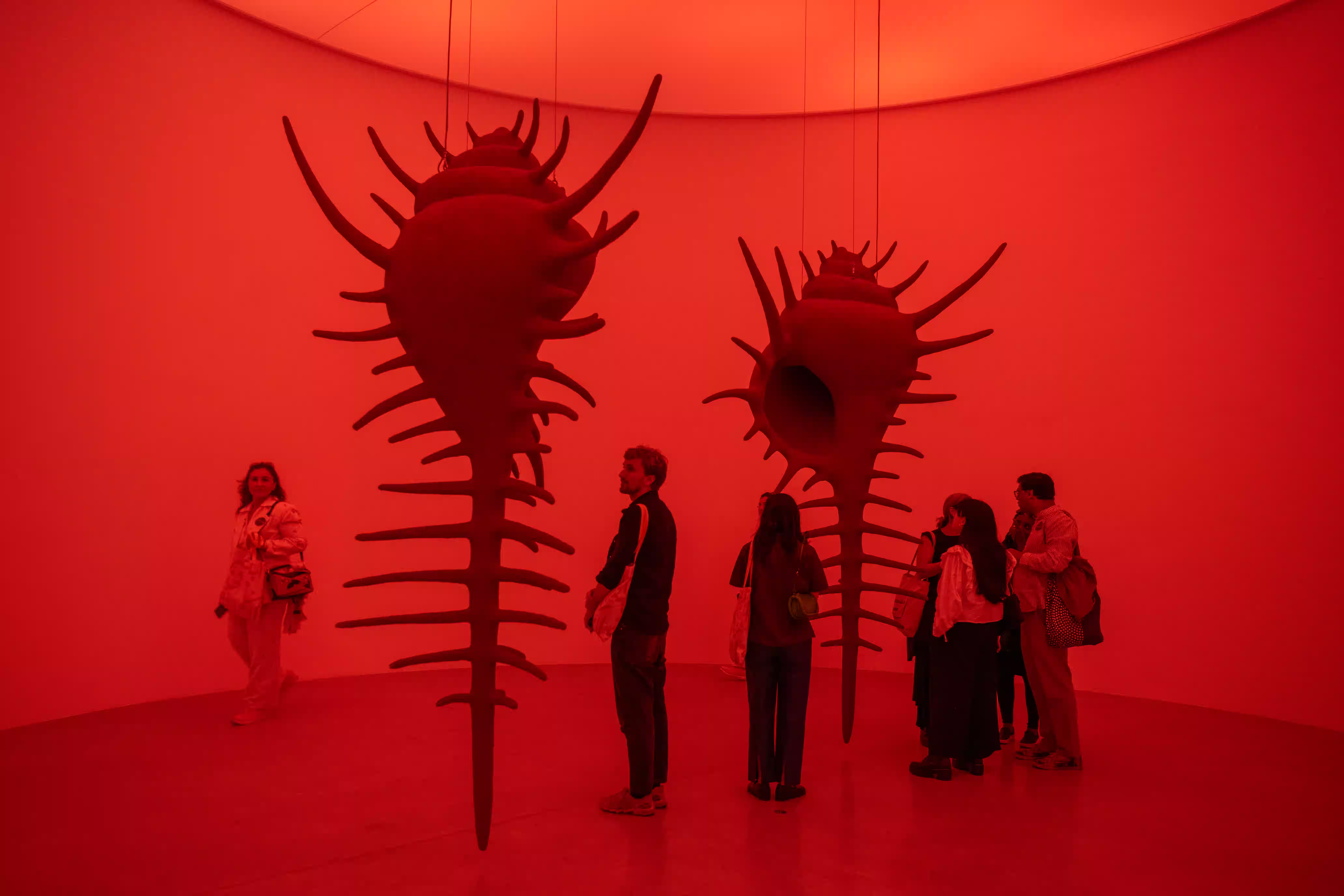
Installation view of Monira Al Qadiri, Gastromancer, 2023. Photography by Motaz Mawid. Image courtesy of Sharjah Biennial 16.
Across the biennial, the most exciting moments occur when an artist or an art collective makes a space into their own world, utilizing multiple mediums to do so. Take Lahore-based Risham Syed’s Unn, Pani, Sut (Grain, Water, Truth) (2024), which consists of sculptural and botanical works inspired by the agrarian patterns and sonic rhythms of her homeland. Jorge González Santos's performance of Jatibonicu (People of Sacred High Waters) (2024-2025), a candle-lighting installation, references his Taíno roots. Belgian-American artist Cécile B. Evans wrestles with the information era through composing fantasies of its very possible disasters, like mass information deletion, in her two video series RECEPTION! (2024) and MEMORY! (2025). Sarah Abu Abdallah envelopes an entire gallery space with contemporary life of her native Saudi Arabia: An elongated canvas lines the walls of the gallery, and an animation in a piece called You Ask, We Answer (2024) is projected.
German composers Hauptmeier and Recker elicit wonder and amusement in one of the few strong site-specific pieces. Positional sound technology reacts to the observer as they pass by, generating prerecorded audio from a neighboring palm forest, connecting us to the land. Elsewhere at the Al Hamriyah Studios center, Rita Mawuena Benissan fills her given gallery space with photographs, textiles, found objects, and video works depicting her homeland Ghana’s Indigenous sovereignty. And Taiwanese artist Aluaiy Kaumakan’s woven sculptures overtake the entrance to another Al Hamriyah Studios building with Vines in the Mountain (2020).
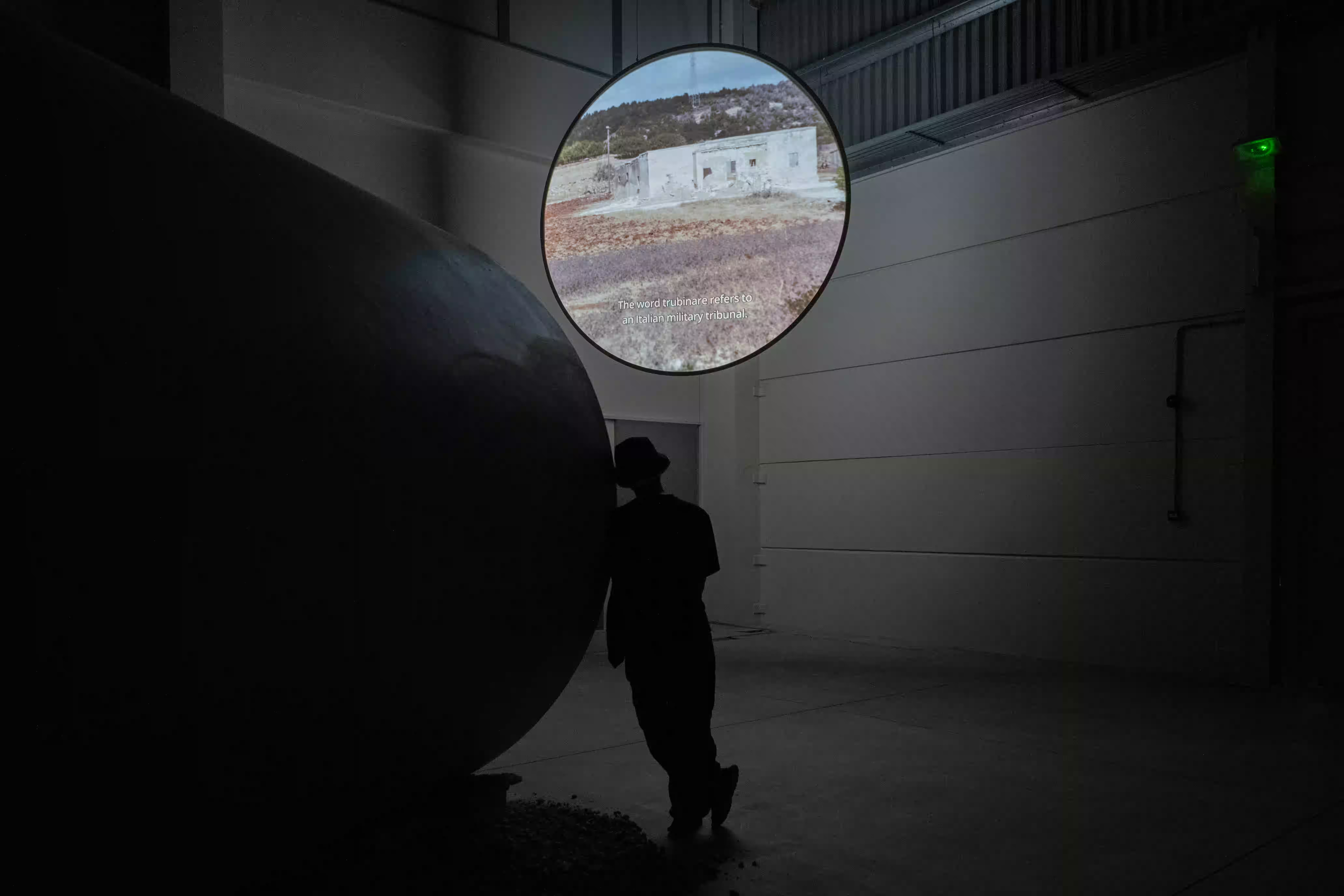
Installation view, Adelita Husni-Bey, Like a Flood, 2025. Photography by Motaz Mawid. Image courtesy of Sharjah Biennial 16.
In the Sharjah Vegetable Market, repurposed as an art space, the ever-impressive and impactful Ramallah-based collective Sakiya’s sculptural and wood works comment on anti-colonial rebellion. An exhibition by Mohammed Al-Hawajri and Dina Mattar exhibited works they saved from Gaza, including those made by their children, which includes paintings and drawings, moves spectators to tears with its archival importance and l powerful dedication to preserve history. And Adelita Husni-Bey delivers an informative, frustrating film on the disruption of Libya’s water supply, Like a Flood, 2025, in a massive, industrial exhibition at the Kalba Ice Factory.
But the biennial’s site-specific programming is not without its flaws. Overall, there is not a strong engagement with the Emirates in the site-specific work. While the SAF’s strong presence in the Emirate is apparent through its acquisition of local buildings and outdoors spaces, it was surprising that the site-specific work didn’t touch on as much locally beyond greater commentary on Indigeneity. Many of the works in the biennial could have taken place anywhere—and much of the most impactful and memorable work was staged indoors in galleries, including all of the work that best addressed the Gulf region.
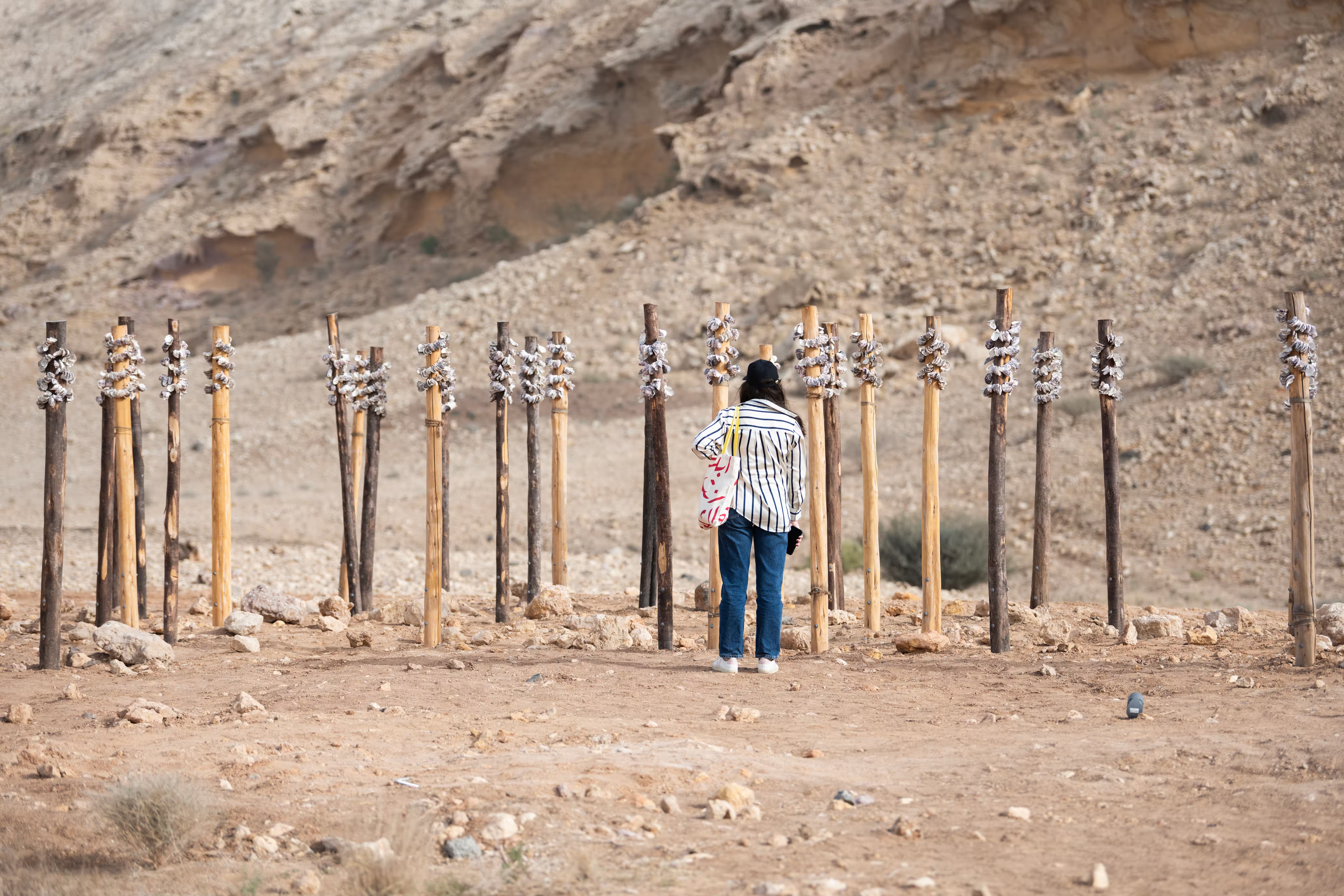
Megan Cope, Kinyingarra Guwinyanba, 2024. Photography Motaz Mawid. Image courtesy of the artist, Milani Gallery, and Sharjah Biennial 16.
At times, site-specific work felt at best awkwardly placed and lacking context, and at worst outright unnecessary. For example, on the mountains of Buhais Geological Park, Australian artist Megan Cope’s Kinyingarra Guwinyanba, (2024), features a series of wooden poles arranged together in rows with groupings of sea shells hanging from their upper halves, referencing that Sharjah was underwater millions of years ago. While it conceptually addresses the landscape directly, it doesn't resonate aesthetically and looks out of place—I have no clue of the piece’s purpose without reading about it.
During the fair, I make a visit to the Al Madam Buried Village, the site of one of my favorite pieces from last year’s March Meeting, Concrete Tent (2015), created by Palestinian group Decolonizing Architecture Art Research, which repurposed a tent that originated in Gaza to this mystical ghost town. Now in the tent’s place is a soundscape by American sound artist Raven Chacon that involves loud shouts that appear to be emitting from the buried village. The audio is abrasive and shocking, and though you could easily say it fits with the idea that Al Dhaid is haunted, locals tell me they find it hard to connect as the village is otherwise quite peaceful and serene. (Ironically, this is one of the few works that is a direct collaboration with Gulf art-workers and Bedouin singers.) Yet even as some of the site-specific work didn’t land as impactful as the gallery work, the effort to do so by foreign artists is commendable.
The Sharjah Biennial 2025 runs through June 15, 2025 at Sharjah City, Al Hamriyah, Al Dhaid, Kalba, Al Madam and other locations across the Emirate of Sharjah.










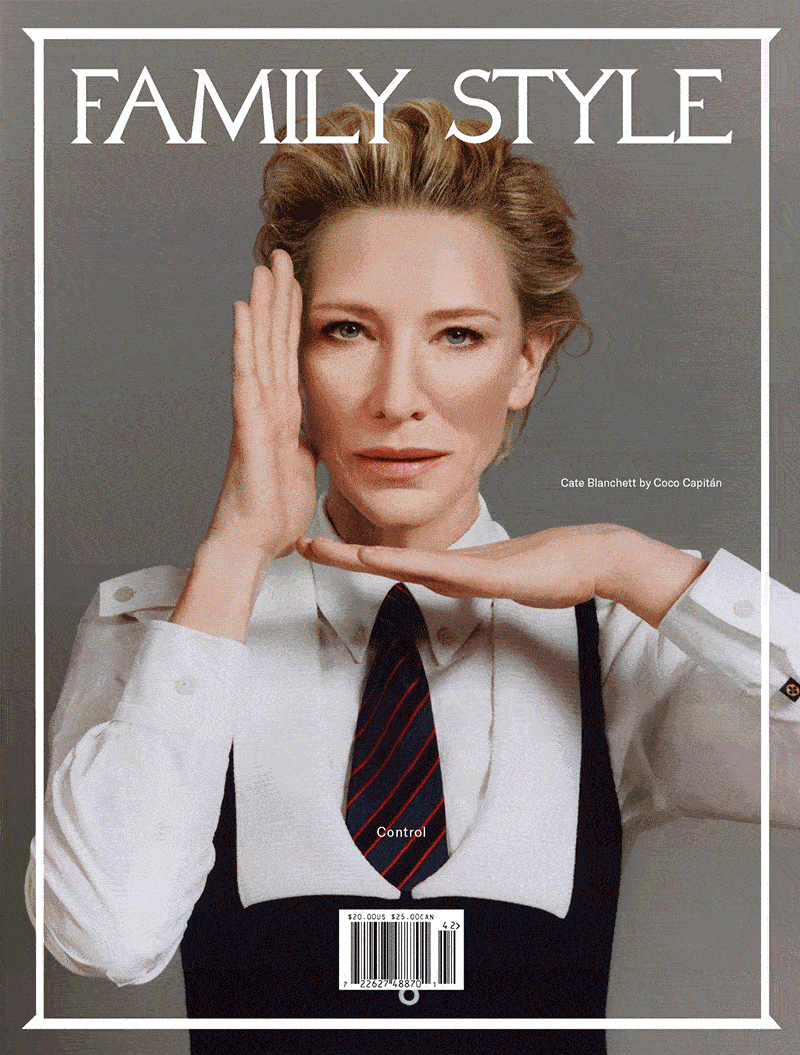


.avif)

